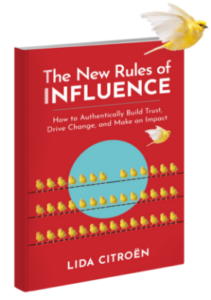![]() When LinkedIn was started, in 2003, it was where people went to connect with others in hopes of finding a new job. If your current boss found you on LinkedIn, it wasn’t a good thing.
When LinkedIn was started, in 2003, it was where people went to connect with others in hopes of finding a new job. If your current boss found you on LinkedIn, it wasn’t a good thing.
Today, LinkedIn is a vibrant and dynamic site full of contacts, information, resources and the ability to influence people you might otherwise not ever meet in person. Using LinkedIn intentionally and effectively is almost certainly part of any professional’s personal brand strategy.
Yet, so many professionals are missing the point of LinkedIn and not taking advantage of the opportunities to enrich their professional network and career. Following are five mistakes you might be making on LinkedIn:
- Using LinkedIn as a social site instead of treating it as a critical business tool. Facebook is where we share our family pictures and recipes. LinkedIn is where we discuss business issues and share resources. While it is fine to post social content to humanize your personal brand on LinkedIn, if the scales tip too far into Facebook territory, your professional audiences could disconnect from you or disregard your posts.
- Neglecting your profile picture. Does your profile picture show: a) your wedding photo? b) a picture of your pet? c) a photo taken so far away I can’t tell if you wear glasses? or d) your military headshot (and you left the service five years ago)? LinkedIn should reflect your professional presence, not your goofy or juvenile side (unless, of course, that IS your professional presence). I have a client who left the corporate world and now designs custom long-board skateboards. While he is a business owner and entrepreneur, a photo of him in a suit would be out of character for his work. In his case, a t-shirt and jeans are perfectly acceptable. For the rest of us, projecting a polished business image is important.
- Posting overly personal information. Are you posting your birthdate and marital status on LinkedIn? Why? Human resources professionals will tell you that inquiring about age or marital status is not permitted in the hiring process, so why advertise this on LinkedIn? By listing your age and status, you are offering information that is completely unnecessary and irrelevant to your professional stature.
- Not engaging with people after you connect or accept an invitation to connect. If you send an invitation to connect on LinkedIn with someone you don’t directly know, it is up to you to show how the connection is relevant (why someone should accept your invitation) and start the conversation. Reply to your new contact when they accept your invitation, even if it is just to thank them for connecting. Similarly, when someone sends you an invitation to connect, you review his or her profile and choose to accept the connection – start a conversation with your new contact. While LinkedIn is a professional business networking site, it still has a social side and people want to have conversations with their online network.
- Joining groups and not engaging. Are you that person who RSVPs to every party invitation but rarely attends? If so, then you might think LinkedIn works the same way. But, joining groups and not participating is missing the point. You should join groups that align with your passion or your area of interest and where you will contribute content and post questions, as well as respond to posts shared by others. These are forums for discussion, not monologues to be ignored.
According to the site, “LinkedIn operates the world’s largest professional network on the Internet with more than 347 million members in over 200 countries and territories.” The importance of LinkedIn in today’s global business world is not to be overlooked. Be sure you are using the platform to its fullest and avoiding these common mistakes.


